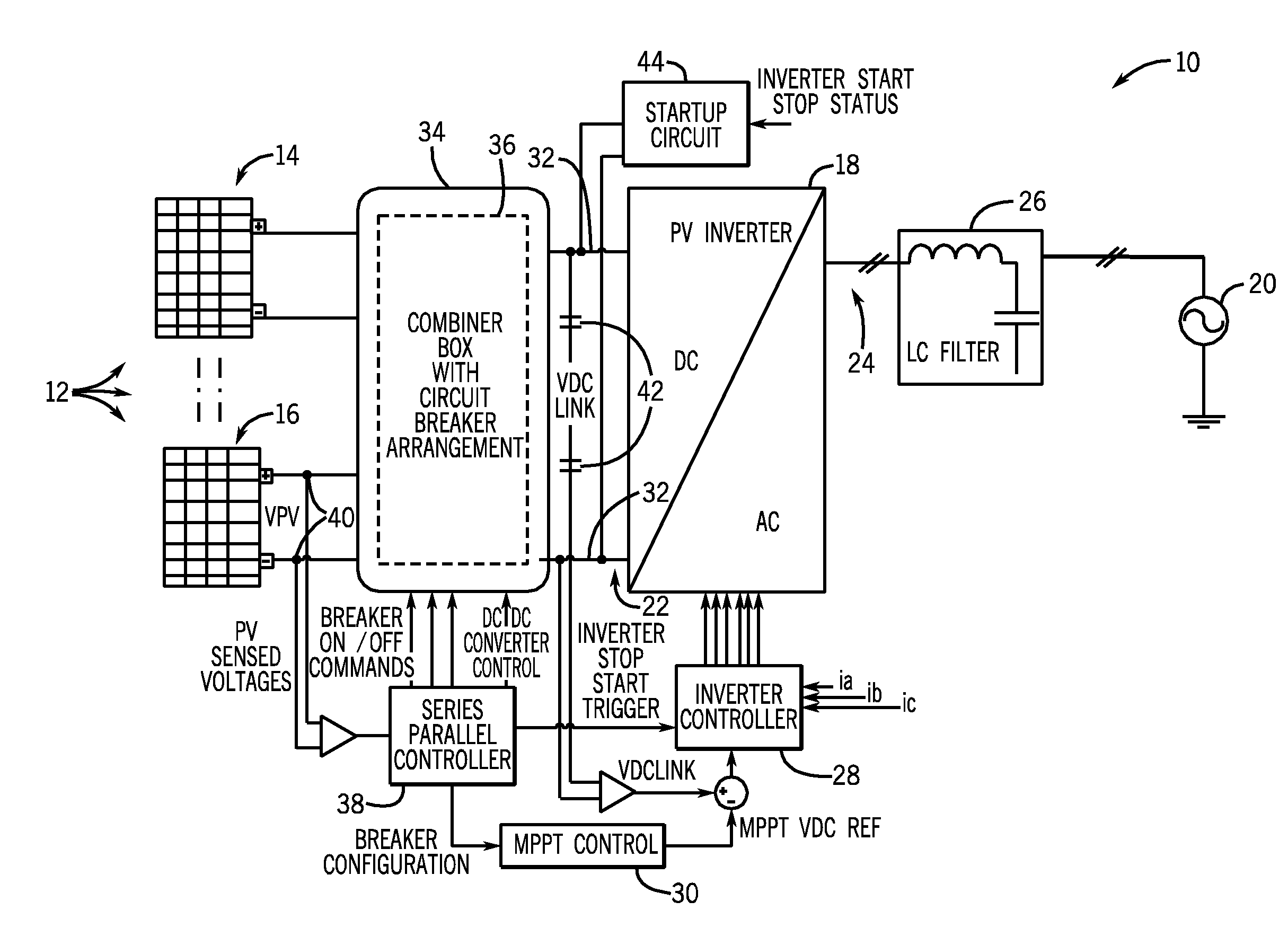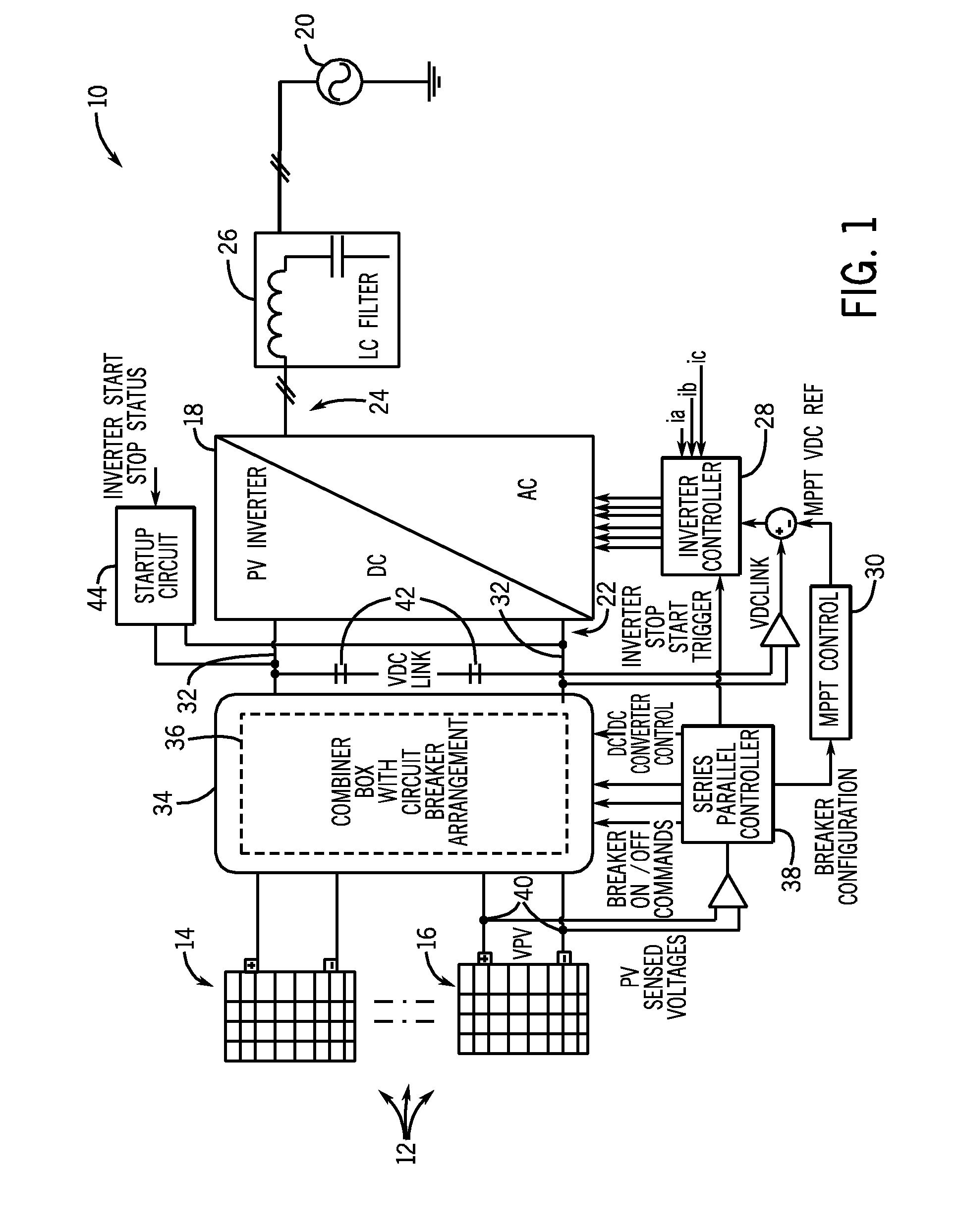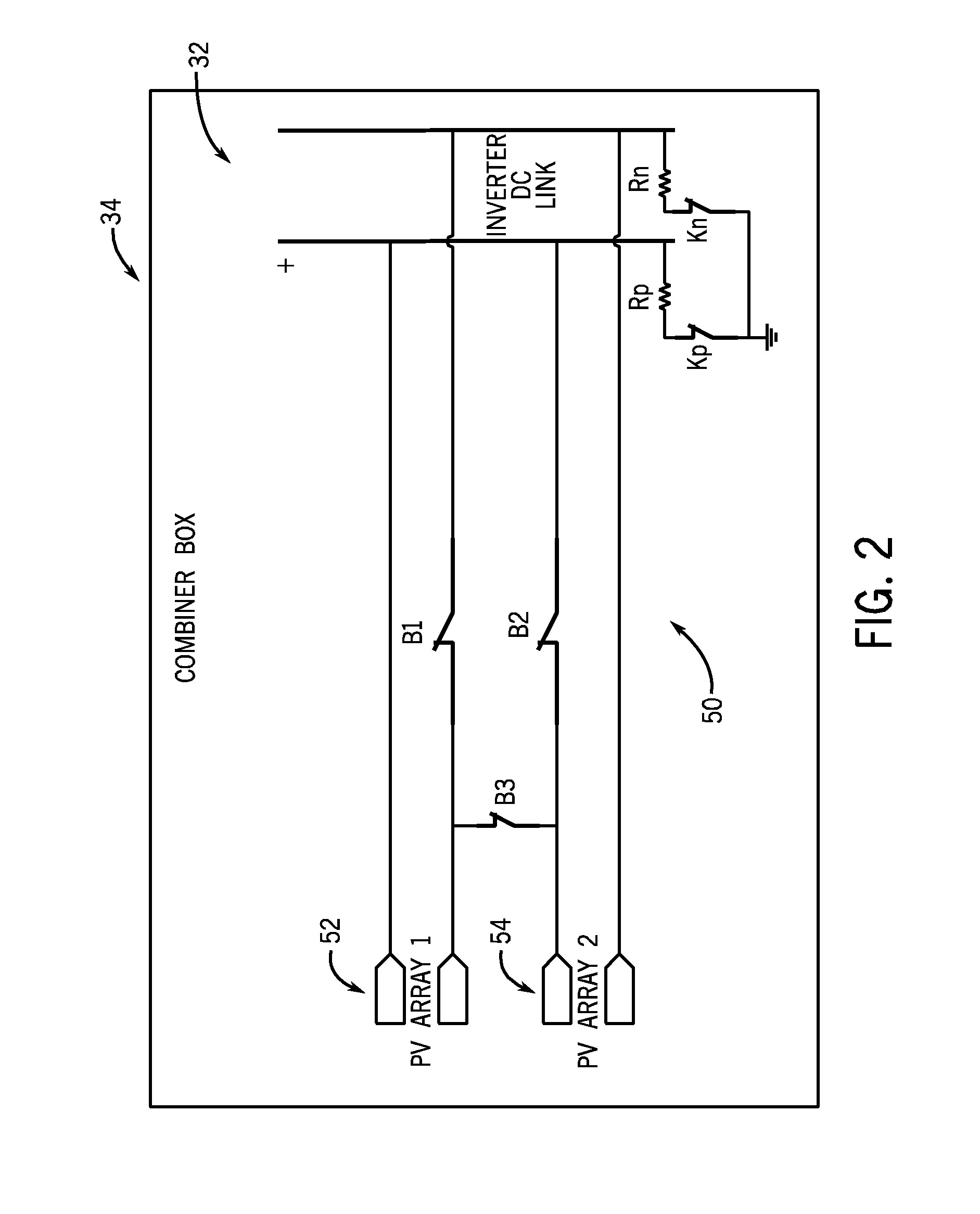System and method for connection of photovoltaic arrays in series and parallel arrangements
a photovoltaic array and series connection technology, applied in the direction of dc network circuit arrangement, dc source parallel operation, semiconductor devices, etc., can solve the problems of one-half of the system loss, inability to meet the requirements of dc power and voltage generation of the pv array group, and inherently less efficient inverters. to achieve the effect of improving the efficiency of the pv power system
- Summary
- Abstract
- Description
- Claims
- Application Information
AI Technical Summary
Benefits of technology
Problems solved by technology
Method used
Image
Examples
Embodiment Construction
[0025]The embodiments of the invention set forth herein relate to a system and method for selectively connecting PV arrays in a PV power system in series and parallel arrangements, so as to eliminate the need for a DC-DC conversion in a PV inverter and improve efficiency in the PV power system.
[0026]Referring to FIG. 1, a photovoltaic (PV) power system 10 is illustrated according to an embodiment of the invention. The PV power system 10 includes a plurality of PV arrays 12, with each of the PV arrays 12 being configured to generate a DC power responsive to received solar irradiation. Each of the PV arrays 12 is composed of a plurality of parallelly connected PV strings (not shown), with each of the PV strings including a plurality of modules (not shown) therein that are connected in series to generate a DC power. While only a first PV array 14 and a second PV array 16 are shown in FIG. 1, it is recognized that the number of PV arrays in PV power system 10 can vary, with two, three, ...
PUM
 Login to View More
Login to View More Abstract
Description
Claims
Application Information
 Login to View More
Login to View More - R&D
- Intellectual Property
- Life Sciences
- Materials
- Tech Scout
- Unparalleled Data Quality
- Higher Quality Content
- 60% Fewer Hallucinations
Browse by: Latest US Patents, China's latest patents, Technical Efficacy Thesaurus, Application Domain, Technology Topic, Popular Technical Reports.
© 2025 PatSnap. All rights reserved.Legal|Privacy policy|Modern Slavery Act Transparency Statement|Sitemap|About US| Contact US: help@patsnap.com



